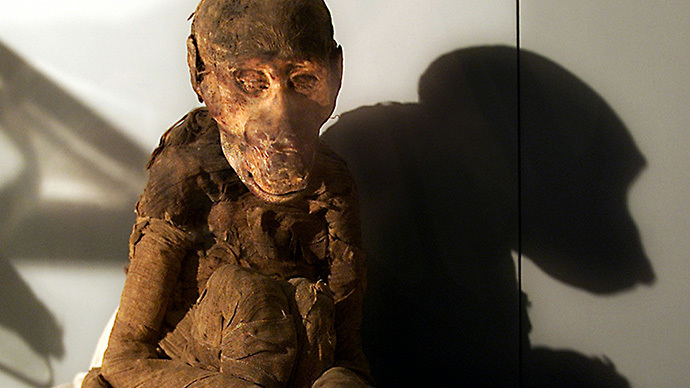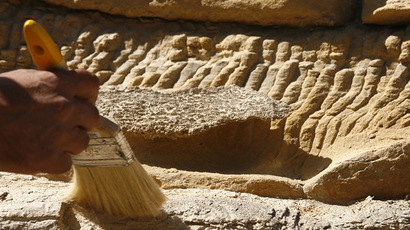Missing mummies: Hundreds of ancient Egyptian animals remains prove to be empty inside

British scientists have been baffled to discover that hundreds of animal mummies from ancient Egypt – everything from cats to crocodiles – contain nothing inside.
More than 800 animal mummies have so far been analyzed by the
Manchester Museum and the University of Manchester using X-rays
and scanning equipment. About one-third contains complete
animals, while another third contain partial remains.
However, the scientists were surprised when they found that the
remaining third of the mummies were empty, BBC reported.
Dr Lidija McKnight, an Egyptologist from the University of
Manchester, admitted: "There have been some surprises.
"We always knew that not all animal mummies contained what we
expected them to contain, but we found around a third don't
contain any animal material at all - so no skeletal
remains," she told the BBC.
READ MORE: Lighthouse of Alexandria: Ancient wonder of the world to be rebuilt in Egypt
In many cases, the cloth was stuffed with other available
material, some of it connected to the animal meant for
mummification.
"Basically, organic material such as mud, sticks and reeds,
that would have been lying around the embalmers workshops, and
also things like eggshells and feathers, which were associated
with the animals, but aren't the animals themselves."
One explanation for the missing animal specimens is that there
was such a huge appetite for the religious offerings that demand
simply outstripped supply.
"The scale of animal mummification between about 800 BC and
into the Roman period was huge," explained Dr. Campbell
Price, curator of the Egypt and Sudan department at Manchester
Museum.
"In terms of how many animals were reared and killed, it
would have been on an industrial scale. The animals were young
and killed when they were quite small. To achieve those numbers
you had to have a very specific breeding program."
READ MORE: Older than oldest of 7 Wonders: 4,600 yo step pyramid uncovered in Egypt
Scientists believe that mummy makers probably struggled to keep
up with the demand, but that does not mean the mummies were
forgeries
"We think there is probably more to it than that," Dr
McKnight told the BBC.
"We think they were mummifying pieces of animals that were
lying around, or materials associated with the animals during
their lifetime - so nest material or eggshells.
"They were special because they had been in close proximity with
the animals - even though they weren't the animals
themselves.
Scientists say that up to 70 million animals may have been
mummified by the ancient Egyptians.














